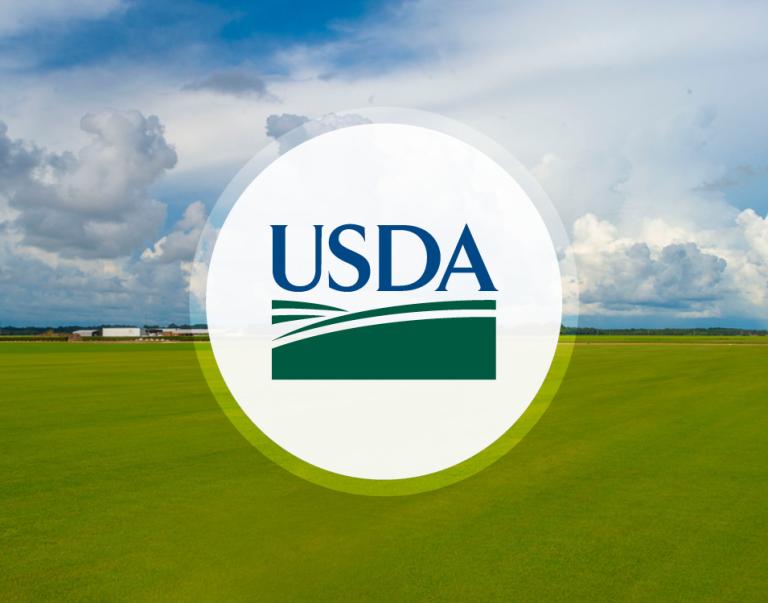USDA is taking a new approach to support smaller, more diverse food and agriculture businesses, giving rural Americans the opportunity to succeed in the communities they love.
View USDA’s infographic outlining the framework (PDF, 263 KB)
For years, America's agriculture system has responded to the call for greater productivity to meet our needs and the needs of the world. This has led to larger farms and fewer farmers and leaves small and mid-sized farms behind, weakens local rural economies, and threatens our food security and safety.
The Biden-Harris Administration recognizes there is a way for us to build a better, more resilient food system that supports farms of every shape and every size in every location across the country.
Through targeted investments in climate-smart agriculture and local and regional food systems, USDA is helping to give farmers, rural communities and families the tools they need to compete, grow and thrive.
For too long, the agricultural system has benefitted the few. Thanks to the Biden-Harris Administration, we are building a system that benefits the many.
CLIMATE-SMART AGRICULTURE
Renewable Energy and Bioproducts
Growing demand for aviation and marine biofuels and bio-based products is a major opportunity for farmers and investments in electric utilities create a new outlet for farm-generated energy, like solar panels and anaerobic digesters. The Biden-Harris Administration has invested $2.1 billion to help farms and rural small businesses invest in cost-saving and revenue-generating energy projects, like solar and wind energy. USDA is also reviewing over $12 billion in applications for rural electrification and transformative clean energy projects that will help communities across the country modernize their infrastructure.
Relevant Announcements:
- Biden-Harris Administration Partners with Rural Americans to Develop Clean Energy to Lower Energy Costs and Create Jobs as Part of Investing in America Agenda
- Biden-Harris Administration Partners with Electric Cooperatives to Bring Affordable Clean Energy to Rural Coloradans as Part of Investing in America Agenda
- Biden-Harris Administration Invests in Clean Energy and Fertilizer Production to Strengthen American Farms and Businesses as Part of Investing in America Agenda
Ecosystem Service Markets
Farmers earn extra income by taking on innovative, climate-smart farming practices that will enable them to participate in carbon and other markets generating new sources of income. USDA is investing in these markets through opportunities like Partnerships for Climate-Smart Commodities, which has to date provided over $3 billion for 135 projects that help over 60,000 producers introduce climate-smart practices into their operations and access new climate markets. In addition, USDA is also investing in biofuel opportunities so producers can make use of agricultural waste products and generate more revenue.
Relevant Announcements:
- Biden-Harris Administration announces $145M from Investing in America agenda to help landowners access climate markets
- USDA Kicks-off Effort to Expand Market Opportunities for Climate-Smart Commodities and Learn from Pilot Projects
- Biden-Harris Administration Invests in Clean Energy and Domestic Biofuels to Strengthen American Farms and Small Businesses as Part of Investing in America Agenda
- Biden-Harris Administration Announces Awards to Increase Access to Clean, Affordable Domestic Biofuels as Part of President Biden’s Investing in America Agenda
Domestic Fertilizer Production
Boosting domestic fertilizer manufacturing and encouraging innovation in fertilizer technology reduces high costs for farmers and protects them from unpredictable global markets. To date, USDA has invested $251 million through the Fertilizer Production Expansion Program (FPEP) in 57 projects that create jobs and spur economic growth in rural communities by increasing competition in agricultural markets.
Relevant Announcements:
- Biden-Harris Administration Invests in Domestic Fertilizer Projects to Strengthen American Farms and Businesses
- Biden-Harris Administration Invests in Clean Energy and Fertilizer Production to Strengthen American Farms and Businesses as Part of Investing in America Agenda
- USDA Highlights Progress in Partnering with Farmers to Increase Innovative Domestic Fertilizer Production, Expand Double Cropping through Investing in America Agenda
LOCAL AND REGIONAL FOOD SYSTEMS
Organic Farming
Offsetting the costs for organic transition helps more farmers realize higher margins sooner while giving consumers more access to high-demand organic products. USDA’s Organic Transition Initiative (OTI) is a $300 million multi-agency USDA effort to support this transition and build and strengthen organic markets that are in high demand for producers and consumers alike.
Relevant Announcements:
- USDA Announces $40.5 Million in Grant Awards to Support Processing and Promotion of Domestic Organic Products
- USDA Easing Producers’ Transition to Organic Production with New Programs and Partnerships, Announces Investments to Create and Expand Organic Markets
- More than 20,000 Domestic Producers to Benefit from USDA Awards Providing Organic Market Development, Promotion Support
Expanded Processing Capacity
More independent processing facilities help America's farmers and ranchers attain fairer prices, give them options closer to the farm and make the national food supply less reliant on a few, large-scale processing companies. To date, the Biden-Harris Administration has invested over $700 million in 48 states and Puerto Rico for projects that help expand the nation’s independent meat and poultry processing capacity, increasing competition for producers and lowering costs for producers and families.
Relevant Announcements:
- Biden-Harris Administration Invests $110 Million in Meat and Poultry Processing to Strengthen Food Supply Chain, Increase Competition, and Lower Food Costs
- Biden-Harris Administration Partners with Agricultural Producers to Promote Competition, Strengthen Food Supply Chain and Rural Economies
- USDA Announces More Than $43M Investment in Meat and Poultry Processing Research, Expansion and Innovation
Government Food Purchases
Federal procurement and food purchasing agreements, are powerful ways to give small farms and food businesses a leg up and contribute revenue to their communities. In Fiscal Year 2023, USDA purchased $4.9 billion in food and 63 percent of USDA’s purchases for domestic nutrition programs came from small businesses. These purchases support USDA’s nutrition programs, including school meal programs and emergency food providers such as food banks and food pantries.



